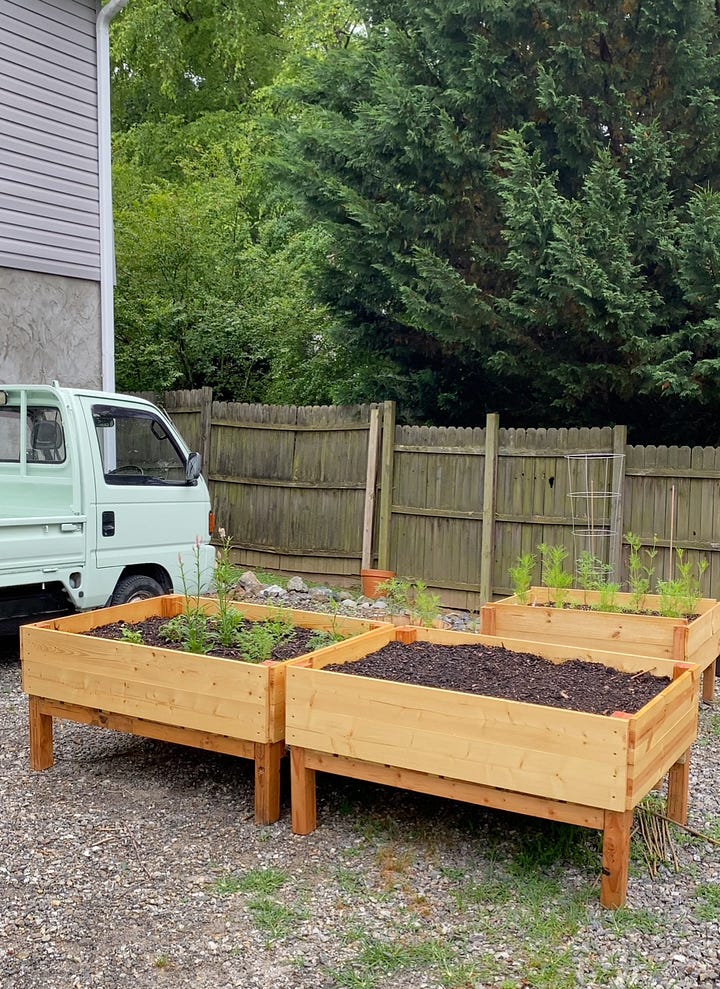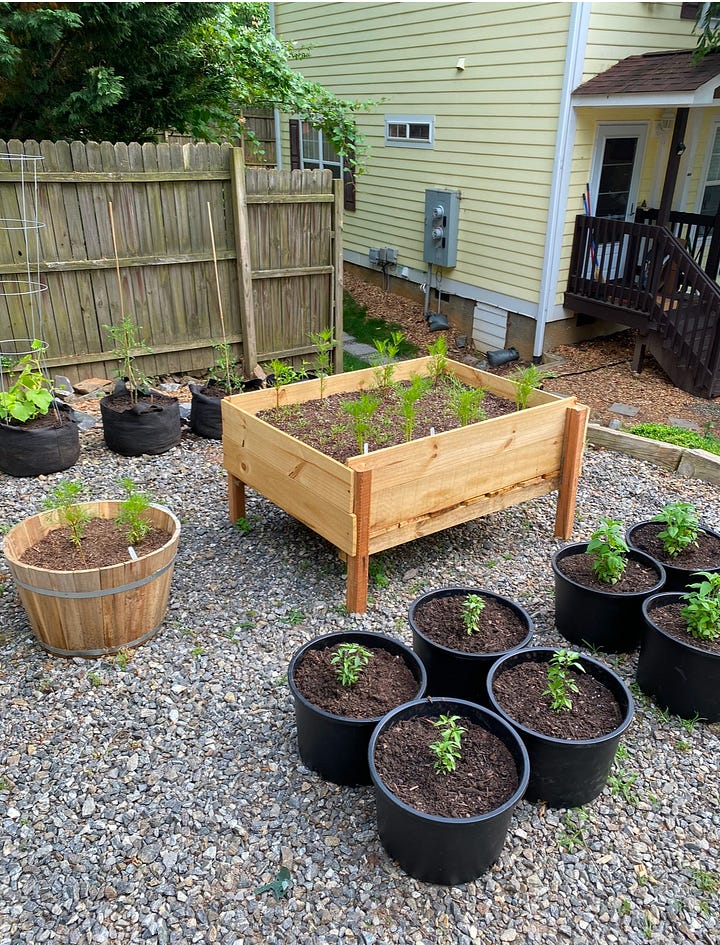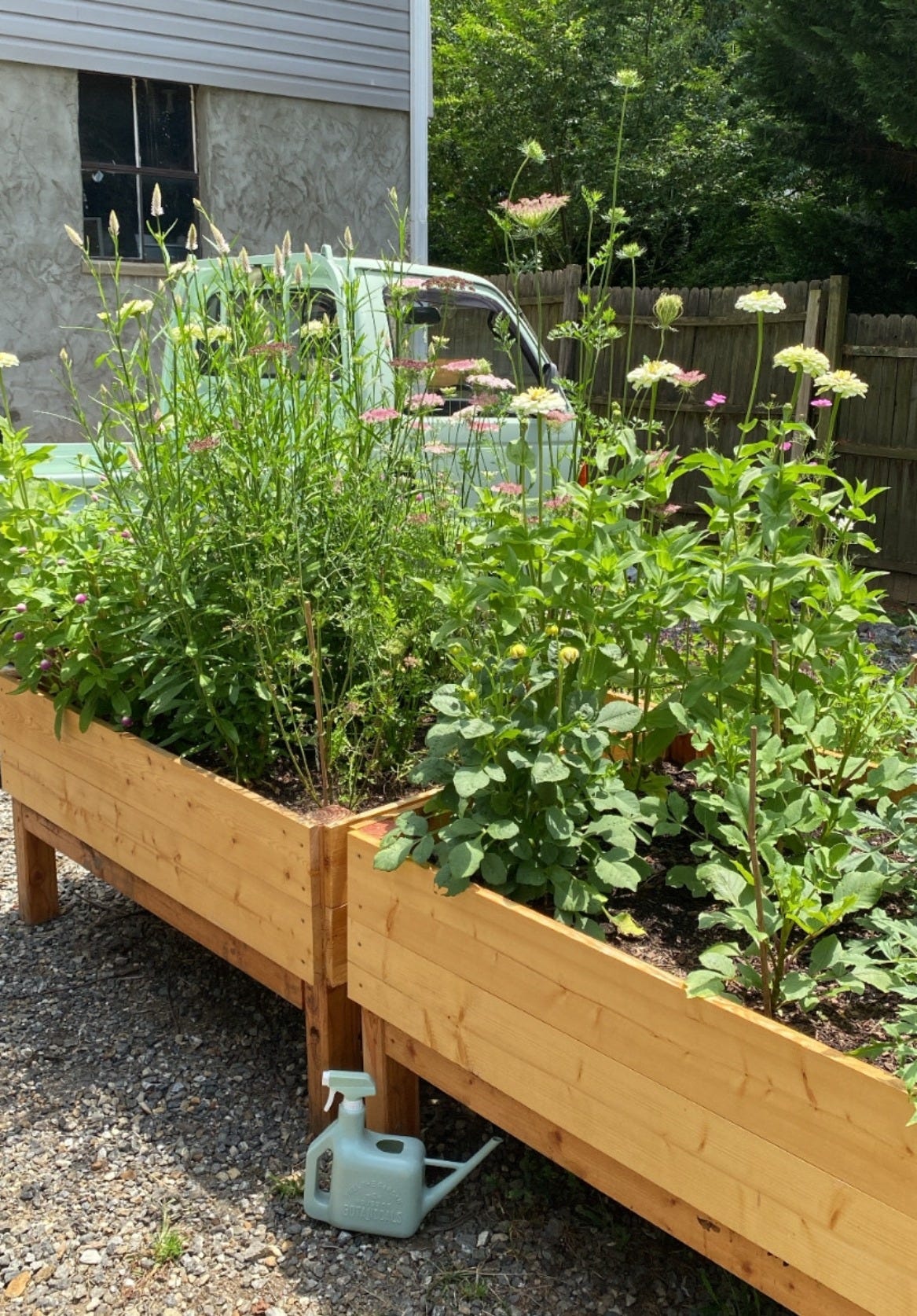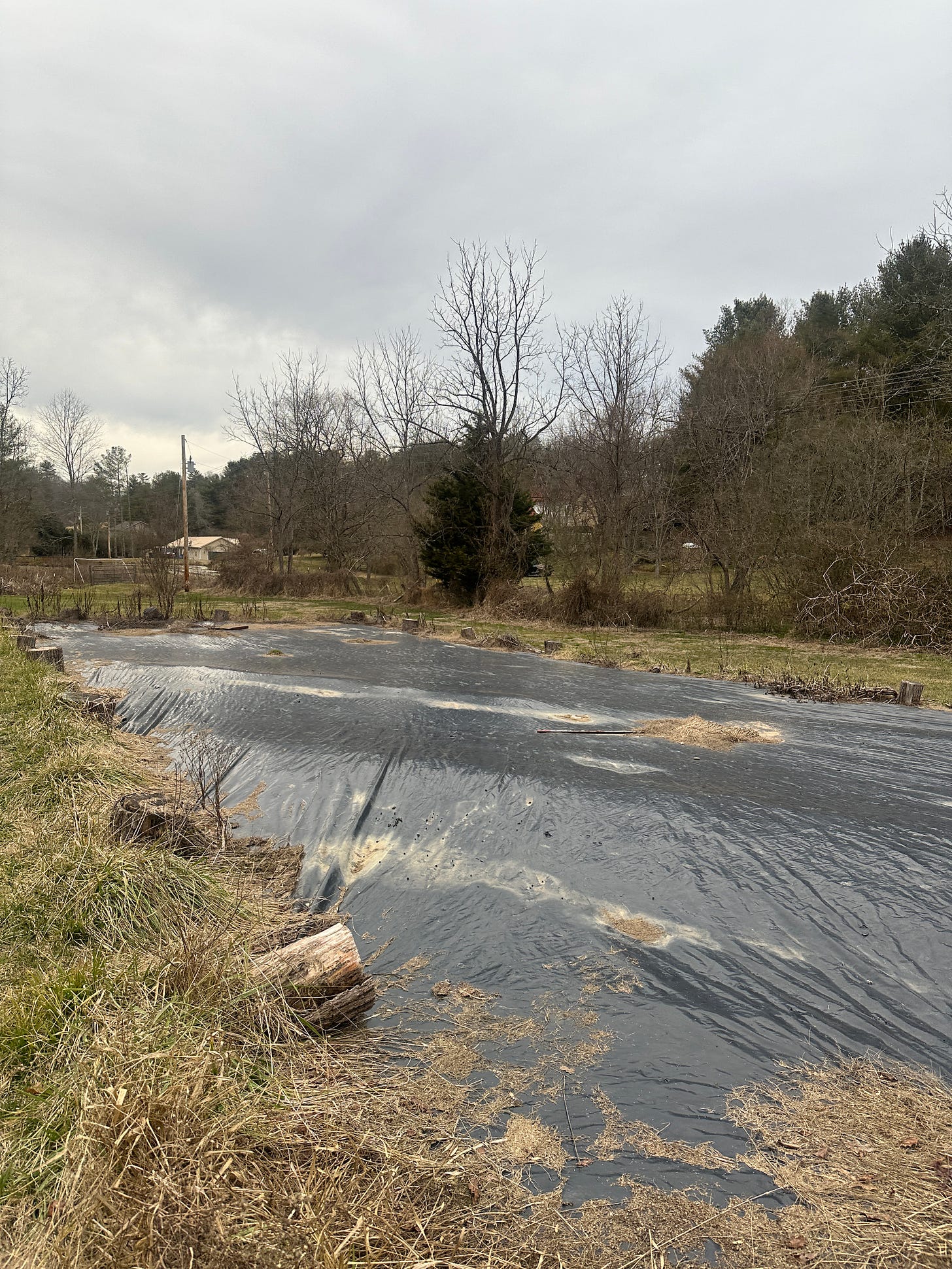Dear reader,
In my last letter, I wrote about the garden that taught me how to garden, my driveway garden, a narrow strip of growing space among gravel, improbably fertile, an act of persistence as much as cultivation. I swore I’d never leave it. Small as it was, it somehow felt endless, an ecosystem unto itself. I wanted to expand, to fill the whole oversized driveway with boxes, to make it vast, abundant enough to stock my truck with flowers. Though in truth, it was hemmed in on all sides.


And then, I moved. Not far, just down the road, but far enough to step into something unfamiliar. This time, I had a yard. I thought I could finally have a proper garden.
That was mid-November, when the trees were bare, and the front yard was deceptively sunny. By spring, I found myself in a grove thick with shade. The house, nestled between a Norway maple and an oak, was encircled by towering pines above. Below, pin cherries with slender white-gray trunks rose in clusters among a sea of evergreen ivy. When the windows were open, the endless chatter of birds—nuthatches, finches, wrens filled the space as if announcing that this place had long been theirs.
What was gained in green was lost in light. In the mornings I would head outside, still in pajamas, to drag my containers and pots from one place to another. Finally, they were left idle in the front, waiting for me to make sense of things. I spent an entire day watching the yard, tracking the sun’s path, trying to decipher where a garden could exist among a grove. In the end, it was the driveway again.
In my last driveway garden, I had space to grow, but here, I was truly at the tip of the driveway. My overly optimistic vision for what it could become stretched far beyond the limited space I had. And yet, something was beginning to stir. Around this time, several key things happened that set me on the path to finding my farm.
Growing my own flowers in that small space marked a turning point. It also coincided with my deepening work as an aspiring naturalist. At the time, I was immersed in the complexities of ecosystems, learning how everything is carefully woven together. I began to see the threads between the minute, the fluttering of microorganisms in the soil, and the deep-time rhythms of the planet. It wasn’t just about growing flowers anymore. Our choices, from what we plant to how we grow, extend far beyond the garden wall.
At the same time, I began to see the waste deeply embedded in the floral industry. I learned that 80% of flowers sold in America are imported, often from countries with lax regulations on pesticides and labor conditions. I witnessed this waste firsthand: plastic netting on single blooms, mountains of packaging, and single-use cooling packs. It became harder to ignore the deep irony of nature commodified. Most of the flowers available are wrapped in plastic and soaked in harmful chemicals that pollute the environment and endanger everyone who touches them, including the growers, florists, and consumers who buy them unknowingly.
And then there were the weddings, lavish, extravagant affairs where the waste felt almost obscene. I wanted to do things differently, but without land, how could I even begin?
Land in the city is a precious thing. In a society so steeped in the notion of private property, few people are willing to relinquish their grip on the earth.
Then, out of nowhere (thanks to my partner, who had been quietly searching), Tiny Meadow was found through NC Farm Link a network that connects farmers with those looking to steward land, offering resources to help people start farming or gardening without owning a plot.
At the time, Tiny Meadow wasn’t a farm, it was a dream, half-formed. Someone else had envisioned a flower farm there and covered 2,000 square feet with a tarp to suppress the grass, but they couldn’t follow through. They were looking for someone to take over and give the land new life. That’s where I came in.
It was January when we got straight to work building Tiny Meadow, a name we chose, inspired by naturalized flower meadows (and a nod to Monty Don’s Longmeadow).
Building a farm on land that isn’t mine has been transformative. It’s not about owning the land, but nurturing it, a space to grow flowers and community. In collaboration with the landowners, who introduced bees, I help improve soil health and provide pollen for the bees. In return, I’m part of the slow flower movement, sharing flowers with my community, and working towards building a business that contributes to the local environment.
Not everyone has access to land, and for a long time, I didn’t either. But I’ve learned that there are so many ways to grow, no matter the space. Here are a few ideas:
How to Garden Without a Garden
Container Gardening: Pots, baskets, and repurposed containers can hold everything from flowers to vegetables. My driveway garden is entirely grown in containers.
Balcony or Rooftop Gardens: If you have access to a balcony or rooftop, containers or raised beds can transform these spaces into productive gardens. A good idea is to think vertically. You might not have much square footage, but you may be able to set up a trellis and plant climbing flowers or vegetables.
Windowsill Kitchen Herb Garden: Herbs like basil, rosemary, or mint can grow easily in small containers on a windowsill or kitchen counter. You can find these at your local farmers market.
Community Gardens: Many cities offer community garden spaces where you can volunteer in a community garden. It’s a good way to learn and grow without owning land.
A Tiny Edible Flower Garden: Flowers like pansies, nasturtiums, and marigolds can be grown in small spaces like containers or hanging baskets. Not only do they look beautiful, but they are edible! (Don’t underestimate the power of adding a single pansy flower to your bev of choice).
Get Connected to the Local Farming Community: Organizations like NC Farm Link don’t just exist here! There are other organizations that connect people with land-sharing opportunities, mentorship, and local farming initiatives. Even without your own land, joining a community can provide resources, experience, and a sense of connection.
One Plant Garden You don’t need hundreds of varieties to have a garden. Sometimes, simply choosing one plant to focus on, whether it’s a patch of chamomile or a single tomato plant, can deepen your connection to growing.
My own journey, from a driveway garden to Tiny Meadow, has shown me that land is never truly ours. It’s something we care for, something we move through.
The spring equinox is quickly approaching, and I’m already busy putting in full days at the farm prepping beds. This week, I’ll be starting thousands of seeds indoors. I’m excited to share the ups and downs of my second growing season at Tiny Meadow, along with more hands-on gardening content along the way.
Join the subscriber chat! You can post questions or share what you’re looking forward to in the garden this year:
May you feel the pull of new growth, as the water draws up from the moist earth.
Love,
Rowen












This is so cool! I love that this is even a possibility!
Beautiful & inspiring story of your journey, which is similar to mine, although my garden now is urban & quite small. I’d love to grow flowers too so I look forward to following your journey. 💐🍃